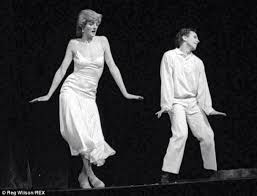I had the joy of interviewing Mariana this week and below you can read our ideas over the next few days:
Karen : I am intrigued by your capacity to work with film AND dance image as a musician. Do you see differences between music for Moving Image on film and music for Moving Image in the studio?
Mariana:That’s a very interesting question. I have a lot of thoughts about it. I hope I can put them in order, haha! Yes, I think that there are a lot of differences between the music for moving image in the film or in the studio. Definitely, I don’t create music for the films in the same way as I do it in the studio. In my films I’m totally free to create and to relate my music with moving image in the way that I want. In films, music and moving image are more related to a concept, to a 10-15 story that evolves and creates a whole artistic piece. Maybe playing for contemporary advance classes, or for improvisation classes, could give me the same wide space to create. If dancers in the studio, for example, start to create movement from a feeling, or from something visual, or from something abstract, maybe this could give a different approach and more diversity into my music.
Karen: So the live experience is different?
Mariana:Nowadays, I’m playing a lot for ballet classes for students, and this is for me a very different approach of how I create music in the studio. Rules are precise and the students need the support from my music, so I definitely approach in a very concrete way. I adapt and follow the teacher’s indications, and then I play to support the students and the teacher, and of course, give them inspiration and create a good flow with the music.
Next blog, we talk about how music supports anatomy and choreography. Enjoy!
IMAGE FROM ‘4’ BY MARIANA PALACIOS









